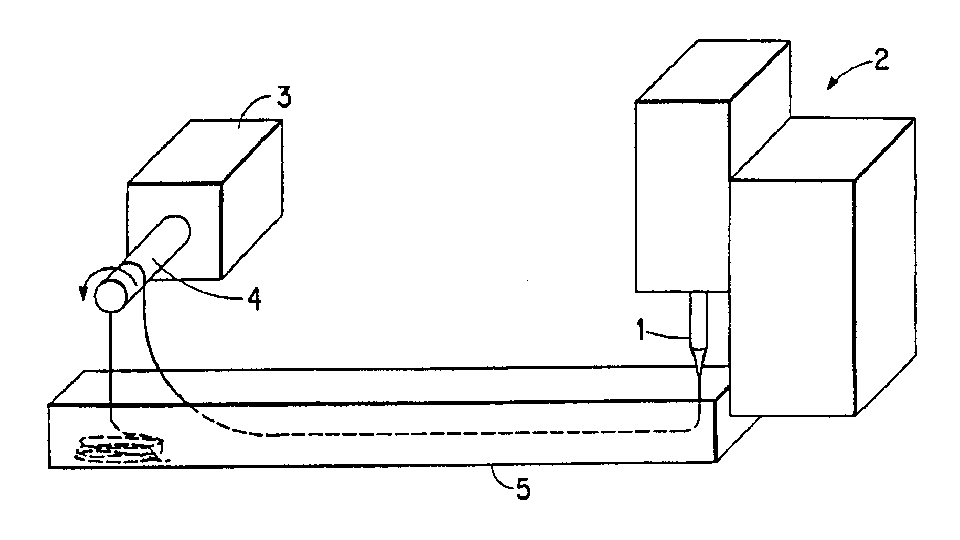Dispersion spinning process for poly(tetrafluoroethylene) and related polymers
A technology of tetrafluoroethylene and dispersion, applied in the direction of single-component synthetic polymer rayon, artificial filament made of cellulose derivatives, wet spinning method, etc., can solve problems such as hindering sintering fibers and difficulties
- Summary
- Abstract
- Description
- Claims
- Application Information
AI Technical Summary
Problems solved by technology
Method used
Image
Examples
Embodiment
[0067] The following Examples 1-15 were tested using the intermediate fiber strength determination method described above.
[0068] Table 1 shows the name of the matrix polymer tested, DS, the weight percent concentration of the matrix polymer in the polymer solution, the viscosity of the matrix polymer solution at 25°C, the weight ratio of PTFE to matrix polymer solids in the intermediate fiber, The composition of the coagulation liquid and the measured value of the strength of the intermediate fiber structure.
[0069]The weight ratio of PTFE to matrix polymer is determined by dividing the weight of solids of polymer particles by the weight of solids of matrix polymer in the spinning mixture. Since the fibers are extruded into the coagulation bath, the entire polymer is converted to fiber solids, so the same ratio represents the composition of the intermediate fiber structure.
[0070] matrix
Sample No.
D.S.
%
matrix
V...
example 16~20
[0085] The solution was prepared as follows: 1.9 kg of the hydroxypropyl cellulose (HPC) of Examples 11, 12 and 13 above were slurried in 15.8 liters of soft water at about 25°C. After the HPC was wetted, 12.3 kg of 23% sodium hydroxide solution was added to the water / HPC mixture. The resulting mixture was stirred under vacuum (approximately 29 mm Hg) for 1 h and then filtered through a 50 μm polypropylene felt bag filter into a membrane degasser operating at approximately 29 mm Hg vacuum. The viscosity of the obtained solution at 25°C was 4,800 mP·s. The above solution stream was combined with a stream of TEF 3311 poly(tetrafluoroethylene) (PTFE) dispersion (supplied by DuPont, Wilmington, DE) with relative flow controlled so that the weight ratio of PTFE solids to HPC solids was 8.2, and the in-line static Mix in a mixer. The resulting mixture was then pumped through a spinneret with 180 holes (6 mil diameter) submerged below the level of the coagulation bath. The coagula...
PUM
| Property | Measurement | Unit |
|---|---|---|
| viscosity | aaaaa | aaaaa |
Abstract
Description
Claims
Application Information
 Login to View More
Login to View More - R&D
- Intellectual Property
- Life Sciences
- Materials
- Tech Scout
- Unparalleled Data Quality
- Higher Quality Content
- 60% Fewer Hallucinations
Browse by: Latest US Patents, China's latest patents, Technical Efficacy Thesaurus, Application Domain, Technology Topic, Popular Technical Reports.
© 2025 PatSnap. All rights reserved.Legal|Privacy policy|Modern Slavery Act Transparency Statement|Sitemap|About US| Contact US: help@patsnap.com


